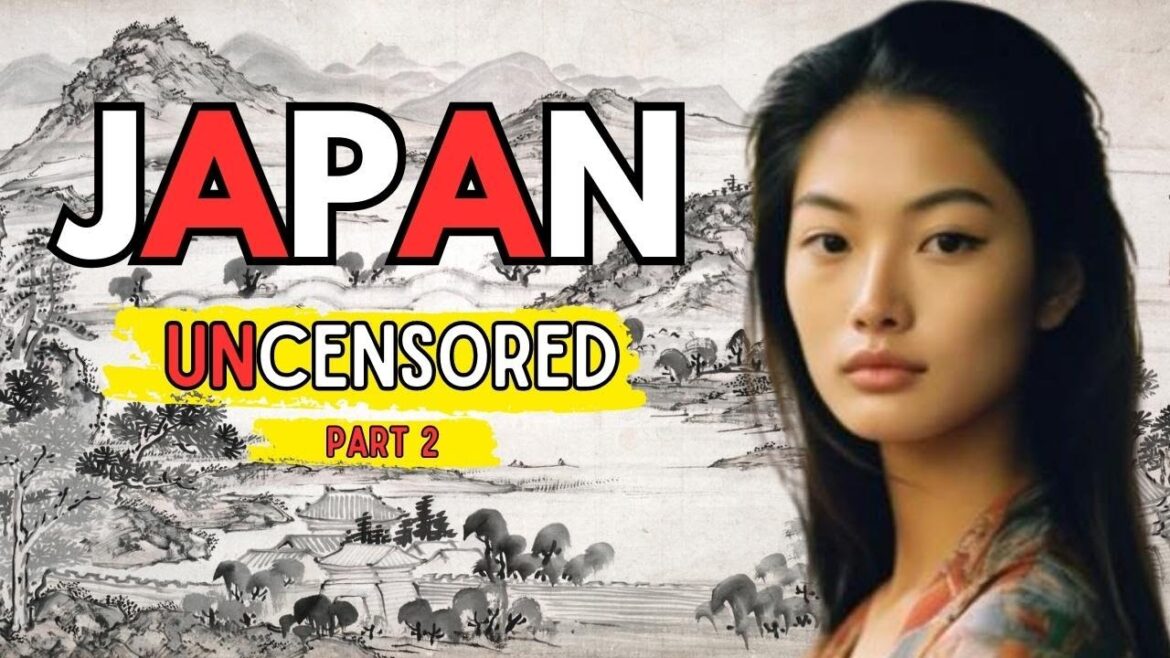Welcome back to the second part of our fascinating series, “Exploring Japan’s Extraordinary Customs & Traditions!” In this video, we delve even deeper into the heart of Japanese culture, unveiling more captivating customs and time-honored traditions.
Join us on this incredible journey of discovery and appreciation for Japan’s cultural marvels. So, make sure to subscribe to our Travel Vibes channel, so you never miss a moment of our thrilling explorations around the globe.
#1 The Artistry of Japanese Calligraphy (Shodo): Japanese calligraphy, known as Shodo, is a captivating form of artistic expression, reflecting the beauty and precision of Japanese culture.
#2 Yabusame – The Ancient Art of Mounted Archery: Yabusame is a traditional Japanese equestrian sport that showcases skillful archers riding at high speeds, aiming to hit targets with arrows.
#3 Fascinating Superstitions – Blood Types and Fortunes: In Japan, many believe that blood types influence personality traits and destiny.
#4 The Intricate Craftsmanship of Samurai Swords: Samurai swords, or katana, represent the epitome of Japanese craftsmanship.
#5 Mysterious Fox Shrines – Guardians of Inari: Foxes hold significant symbolism in Japanese folklore, believed to be messengers of Inari, the Shinto god of rice and prosperity.
#6 Noh Theater – The Hauntingly Beautiful Masked Performances: Noh, a traditional form of Japanese theater, showcases masked actors performing mesmerizing and poignant tales.
#7 The Art of Yuzen – Traditional Japanese Kimono Dyeing: Yuzen is a time-honored technique used to hand-dye intricate patterns on silk kimonos.
#8 Ema – Wishes on Wooden Plaques at Shinto Shrines: Ema are wooden plaques on which visitors write their wishes and prayers at Shinto shrines.
#9 Osechi Ryori – The Exquisite New Year’s Cuisine: Osechi Ryori is a traditional Japanese New Year’s feast, meticulously prepared and presented in beautiful lacquer boxes.
#10 Takarazuka Revue – All-Female Musical Theater Extravaganza: Takarazuka is a renowned Japanese theater troupe featuring all-female casts who perform captivating musicals and plays.
#11 Aizome – The Timeless Indigo Dyeing Technique: Aizome is the traditional Japanese art of dyeing textiles using natural indigo.
#12 Thunderous Taiko Drumming Performances: Taiko drumming is a powerful and energetic art form in Japan.
#13 Tengu – The Enigmatic Long-Nosed Goblin: Tengu are mythical creatures in Japanese folklore, often depicted as bird-like beings with long noses.
#14 Yomogi Bathing – Herbal Baths with Therapeutic Properties: Yomogi bathing is a traditional Japanese practice that involves soaking in hot water infused with yomogi (Japanese mugwort) leaves.
#15 The Art of Nara’s Yamato-e – Traditional Japanese Painting: Yamato-e is a style of Japanese painting that emerged in the Nara period.
#16 Sagicho Matsuri – Welcoming Spring with Fire Festivals: Sagicho Matsuri is an annual spring festival celebrated in various regions of Japan.
#17 Gagaku – Japan’s Oldest Orchestral Music: Gagaku is a traditional Japanese music genre that dates back over a millennium.
#18 Kokedama – The Living Art of Moss Ball Plants: Kokedama is a form of Japanese gardening where plant roots are encased in moss balls, eliminating the need for traditional pots.
#19 The Unusual Blending of Shinto and Buddhism: In Japan, Shinto and Buddhism have coexisted for centuries, leading to unique syncretism where shrines and temples often share the same space.
#20 Hanayome -Hanayome refers to the bride in Japanese wedding traditions. It symbolizes beauty, purity, and the beginning of a new life.
#21 En-nichi – Japanese Temple and Shrine Fairs: En-nichi are festive events held at temples and shrines, attracting visitors with food stalls, games, and entertainment.
#22 The Allure of Maiko & Geiko Culture: Maiko and Geiko, apprentice and professional geisha, respectively, are iconic figures in Kyoto’s traditional entertainment scene.
#23 The Mystique of Ama Divers – Women of the Sea: Ama are female divers in Japan who harvest seafood while freediving without modern equipment.
#24 Sento – The Public Bathhouses of Japan: Sento are communal bathhouses that have been an integral part of Japanese culture for centuries.
#25 The Craftsmanship of Traditional Japanese Fans: Traditional Japanese fans, known as “sensu” or “uchiwa,” are exquisite examples of skilled craftsmanship.
#travel #japan #travelvlog #japantravel #traveling #travelling #travelguide
Join us as we embark on a journey to uncover the world’s best-kept secrets, the hidden gems that often go unnoticed amidst the popular tourist destinations.
Sakuya2 by PeriTune | http://peritune.com
Creative Commons Attribution 3.0 Unported License
https://creativecommons.org/licenses/by/3.0/deed.en_US
Music promoted by https://www.chosic.com/free-music/all/


3 Comments
Thank you for sharing this fascinating video!
I enjoy to watch this video,thank you.
Japan lost maximum people during WWII in Heroshima and Nagaseki its people in bombing with first use of Nuclear Bomb and hence Japan is anxious to increase its population with a long gape since drop of Atom Bombs.